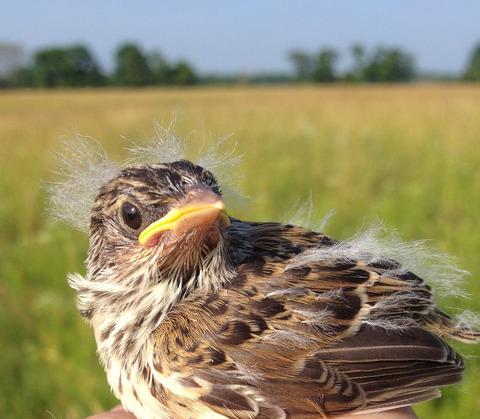当前位置:
X-MOL 学术
›
J. Appl. Ecol.
›
论文详情
Our official English website, www.x-mol.net, welcomes your feedback! (Note: you will need to create a separate account there.)
Finding clarity in ecological outcomes using empirical integrated social–ecological systems: A case study of agriculture‐dependent grassland birds
Journal of Applied Ecology ( IF 5.7 ) Pub Date : 2020-10-11 , DOI: 10.1111/1365-2664.13776 Michael C. Allen 1 , Julie L. Lockwood 1 , Joanna Burger 1, 2
中文翻译:

利用经验性社会生态综合系统寻找生态结果的清晰度:以农业为依托的草原鸟类的案例研究
更新日期:2020-10-11
Journal of Applied Ecology ( IF 5.7 ) Pub Date : 2020-10-11 , DOI: 10.1111/1365-2664.13776 Michael C. Allen 1 , Julie L. Lockwood 1 , Joanna Burger 1, 2
Affiliation

|
- Efforts to monitor and conserve populations and ecosystems in human‐dominated landscapes can benefit from an empirical social–ecological systems approach.
- Here we illustrate how latent variable structural equation modelling of regional time series data can effectively describe interconnected drivers of population fluctuations in dynamic landscapes and can help to reveal previously unknown system drivers.
- Using a declining farmland‐dependent bird species (Ammodramus savannarum) in the eastern United States (1994–2015) as a case study, our analysis reveals how farm management decisions drive population fluctuations (R2 = 20%), while management is in turn highly influenced by climate (R2 = 23%–51%), but not by regional conservation spending.
- Synthesis and applications. Structural equation modelling revealed potential social–ecological pathways for halting regional population declines in a grassland bird, the Grasshopper Sparrow. Lower population growth rates followed years of higher hay yields (~4 percentage points per metric ton increase in hay yield) and later harvests (~2 percentage points per 10‐day delay in harvest). Thus, one pathway for stabilising regional populations could involve compensating farmers for reducing hay harvests, potentially requiring a six‐fold increase in current annual agri‐environmental conservation spending.
中文翻译:

利用经验性社会生态综合系统寻找生态结果的清晰度:以农业为依托的草原鸟类的案例研究
- 可以从经验的社会生态系统方法中受益,以监测和保护人类主导的景观中的种群和生态系统为目标。
- 在这里,我们说明了区域时间序列数据的潜在变量结构方程建模如何有效地描述动态景观中人口波动的相互联系的驱动因素,并且可以帮助揭示以前未知的系统驱动因素。
- 以美国东部地区(1994- 2015年)农田依赖性下降的鸟类物种(Ammodramus savannarum)为案例研究,我们的分析揭示了农场管理决策如何推动种群波动(R 2 = 20%),而管理又反过来很大程度上受气候影响(R 2 = 23%–51%),但不受区域保护支出的影响。
- 综合与应用。结构方程模型揭示了潜在的社会生态路径,以阻止草原鸟类“蚱hopper麻雀”的区域种群数量减少。人口增长率较低是因为多年以来干草产量较高(干草产量每公吨增加约4个百分点),而收获后期(收获时间每延迟10天约2个百分点)。因此,稳定区域人口的一条途径可能包括补偿农民减少干草的收成,这可能需要使当前的年度农业环境保护支出增加六倍。



























 京公网安备 11010802027423号
京公网安备 11010802027423号